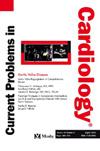Histone modifications as molecular drivers of cardiac aging: Metabolic alterations, epigenetic mechanisms, and emerging therapeutic strategies
IF 3.3
3区 医学
Q2 CARDIAC & CARDIOVASCULAR SYSTEMS
引用次数: 0
Abstract
Cardiac aging represents a complex pathophysiological process characterized by progressive metabolic recombination and functional dedifferentiation of cardiac cellular components. Despite advancements in cardiovascular medicine, a critical research gap persists in understanding the precise epigenetic mechanisms that drive age-related cardiac dysfunction. This comprehensive review elucidates the pivotal role of histone modifications—including methylation, acetylation, and phosphorylation—in orchestrating the molecular landscape of cardiac aging. Significant gaps remain in our understanding of site-specific histone modification impacts on cardiac function, the intricate crosstalk between different histone marks, and their integration with metabolic alterations that characterize the aging myocardium. Current evidence reveals a dynamic epigenetic signature in aged cardiac tissue, typically featuring increased transcriptional activation markers alongside decreased repressive marks, though context-dependent variations exist. This review explores how histone modifications influence critical pathways governing mitochondrial dysfunction, DNA damage repair, inflammation, and fibrosis in aging hearts. Innovative therapeutic approaches targeting specific histone-modifying enzymes promise to mitigate age-related cardiac deterioration, potentially revolutionizing treatment paradigms for cardiovascular diseases in aging populations. Addressing these knowledge gaps requires multidimensional approaches that integrate epigenomics with functional assessment of cardiac performance.
组蛋白修饰作为心脏衰老的分子驱动因素:代谢改变、表观遗传机制和新兴治疗策略
心脏老化是一个复杂的病理生理过程,其特征是心脏细胞成分的进行性代谢重组和功能去分化。尽管心血管医学取得了进步,但在理解驱动年龄相关心功能障碍的精确表观遗传机制方面,仍然存在关键的研究差距。这篇全面的综述阐明了组蛋白修饰的关键作用,包括甲基化、乙酰化和磷酸化,在协调心脏衰老的分子景观中。对于位点特异性组蛋白修饰对心功能的影响,不同组蛋白标记之间复杂的串扰,以及它们与衰老心肌代谢改变的整合,我们的理解仍然存在重大差距。目前的证据表明,衰老心脏组织中存在动态的表观遗传特征,典型特征是转录激活标记增加,抑制标记减少,尽管存在上下文相关的变化。这篇综述探讨了组蛋白修饰如何影响老化心脏中线粒体功能障碍、DNA损伤修复、炎症和纤维化的关键途径。针对特定组蛋白修饰酶的创新治疗方法有望减轻与年龄相关的心脏恶化,有可能彻底改变老年人群心血管疾病的治疗模式。解决这些知识差距需要多维方法,将表观基因组学与心脏功能评估相结合。
本文章由计算机程序翻译,如有差异,请以英文原文为准。
求助全文
约1分钟内获得全文
求助全文
来源期刊

Current Problems in Cardiology
医学-心血管系统
CiteScore
4.80
自引率
2.40%
发文量
392
审稿时长
6 days
期刊介绍:
Under the editorial leadership of noted cardiologist Dr. Hector O. Ventura, Current Problems in Cardiology provides focused, comprehensive coverage of important clinical topics in cardiology. Each monthly issues, addresses a selected clinical problem or condition, including pathophysiology, invasive and noninvasive diagnosis, drug therapy, surgical management, and rehabilitation; or explores the clinical applications of a diagnostic modality or a particular category of drugs. Critical commentary from the distinguished editorial board accompanies each monograph, providing readers with additional insights. An extensive bibliography in each issue saves hours of library research.
 求助内容:
求助内容: 应助结果提醒方式:
应助结果提醒方式:


